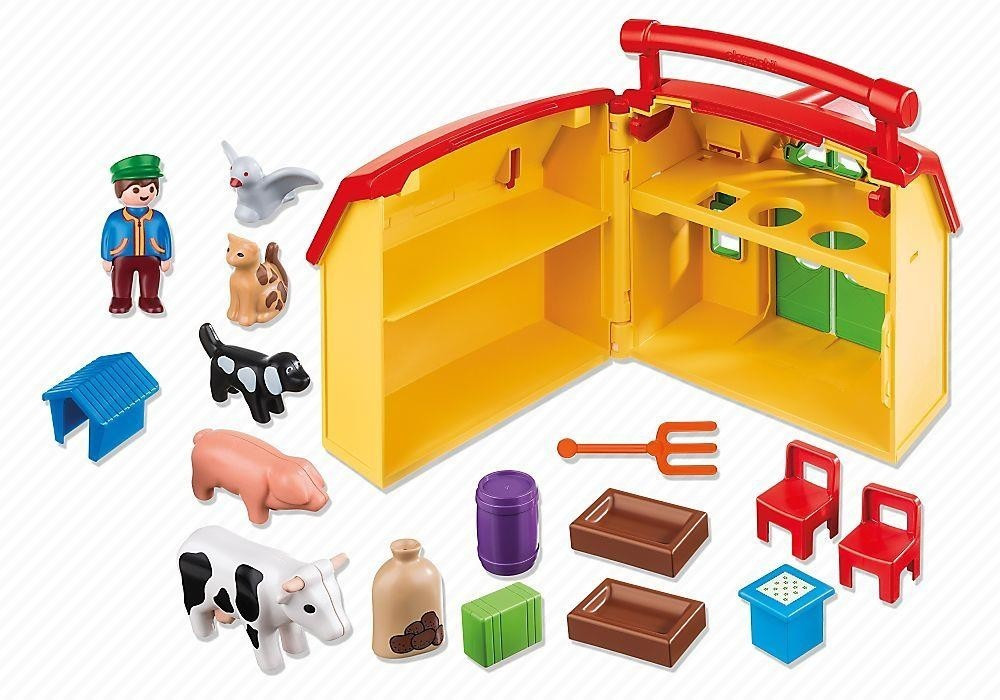
PLAYMOBIL 1.2.3 70399 Mein Mitnehm-Kindergarten mit Schaukel & 1.2.3 71158 Spielspaß auf dem Bauernhof, Lernspielzeug & Motorikspielzeug für Kleinkinder, Erstes Spielzeug für Kinder ab 1,5 bis 4 Jahre: Amazon.de: Spielzeug

PLAYMOBIL 1.2.3 6962 Mein Mitnehm-Bauernhof mit Tieren und Futter, mit Tragegriff zum Zuklappen und Mitnehmen, ab 1,5 Jahren: Amazon.de: Spielzeug

PLAYMOBIL 1.2.3 6765 Meine Mitnehm-Arche-Noah, Ab 18 Monaten & 1.2.3-70184 LKW mit Sortiergarage, ab 1,5 Jahren: Amazon.de: Spielzeug

PLAYMOBIL 1.2.3 71158 Spielspaß auf dem Bauernhof, Lernspielzeug & Motorikspielzeug für Kleinkinder, Erstes Spielzeug für Kinder ab 1,5 bis 4 Jahre: Amazon.de: Spielzeug

PLAYMOBIL 1.2.3 6962 Mein Mitnehm-Bauernhof mit Tieren und Futter, mit Tragegriff zum Zuklappen und Mitnehmen, ab 1,5 Jahren: Amazon.de: Spielzeug

PLAYMOBIL 1.2.3 6962 Mein Mitnehm-Bauernhof mit Tieren und Futter, mit Tragegriff zum Zuklappen und Mitnehmen, ab 1,5 Jahren: Amazon.de: Spielzeug

Playmobil 1.2.3 Mein Mitnehm-Bauernhof (6962) ab 34,95 € (Februar 2024 Preise) | Preisvergleich bei idealo.de

PLAYMOBIL 1.2.3 70180 Mein Mitnehm-Reiterhof mit Zaun, mit Tragegriff zum Zuklappen und Mitnehmen, ab 1,5 Jahre: Amazon.de: Spielzeug

PLAYMOBIL 1.2.3 6962 Mein Mitnehm-Bauernhof mit Tieren und Futter, mit Tragegriff zum Zuklappen und Mitnehmen, ab 1,5 Jahren: Amazon.de: Spielzeug

PLAYMOBIL 1.2.3 6962 Mein Mitnehm-Bauernhof mit Tieren und Futter, mit Tragegriff zum Zuklappen und Mitnehmen, ab 1,5 Jahren: Amazon.de: Spielzeug

PLAYMOBIL 1.2.3 6962 Mein Mitnehm-Bauernhof mit Tieren und Futter, mit Tragegriff zum Zuklappen und Mitnehmen, ab 1,5 Jahren: Amazon.de: Spielzeug

PLAYMOBIL 1.2.3 70399 Mein Mitnehm-Kindergarten mit Schaukel & 1.2.3 71158 Spielspaß auf dem Bauernhof, Lernspielzeug & Motorikspielzeug für Kleinkinder, Erstes Spielzeug für Kinder ab 1,5 bis 4 Jahre: Amazon.de: Spielzeug

PLAYMOBIL 1.2.3 70399 Mein Mitnehm-Kindergarten mit Schaukel & 1.2.3 71158 Spielspaß auf dem Bauernhof, Lernspielzeug & Motorikspielzeug für Kleinkinder, Erstes Spielzeug für Kinder ab 1,5 bis 4 Jahre: Amazon.de: Spielzeug

PLAYMOBIL 1.2.3 70129 Einfamilienhaus mit funktionsfähiger Türklingel und Soundeffekt Toilettenspülung, ab 18 Monaten: Amazon.de: Spielzeug









